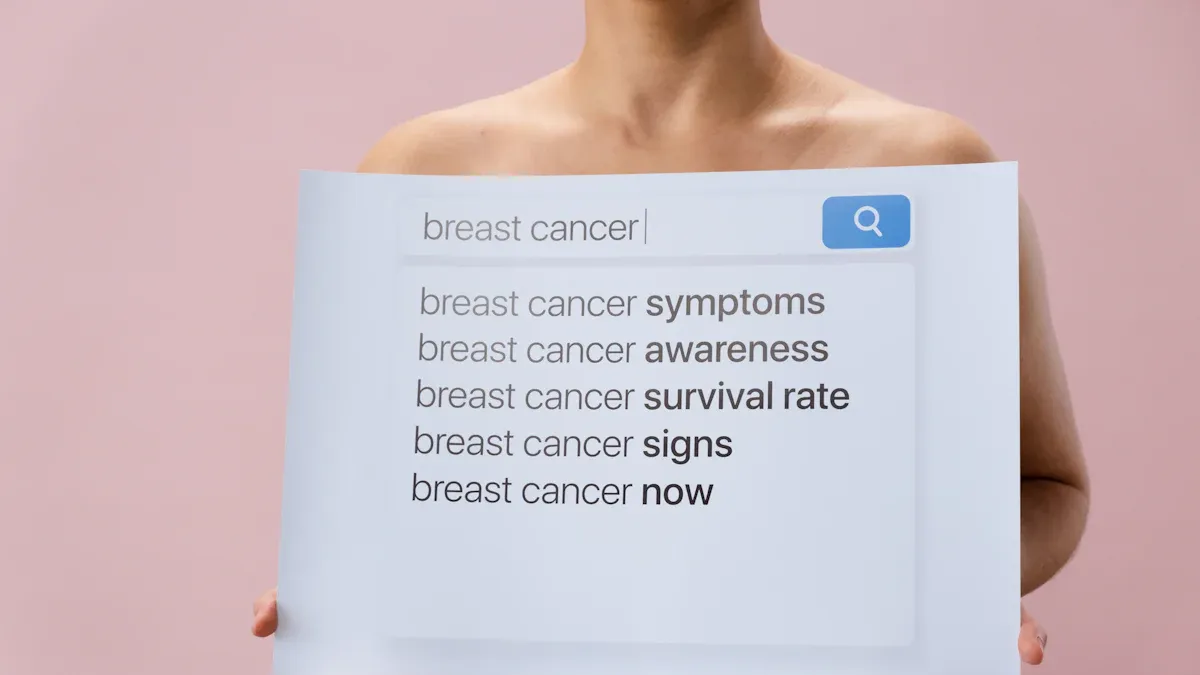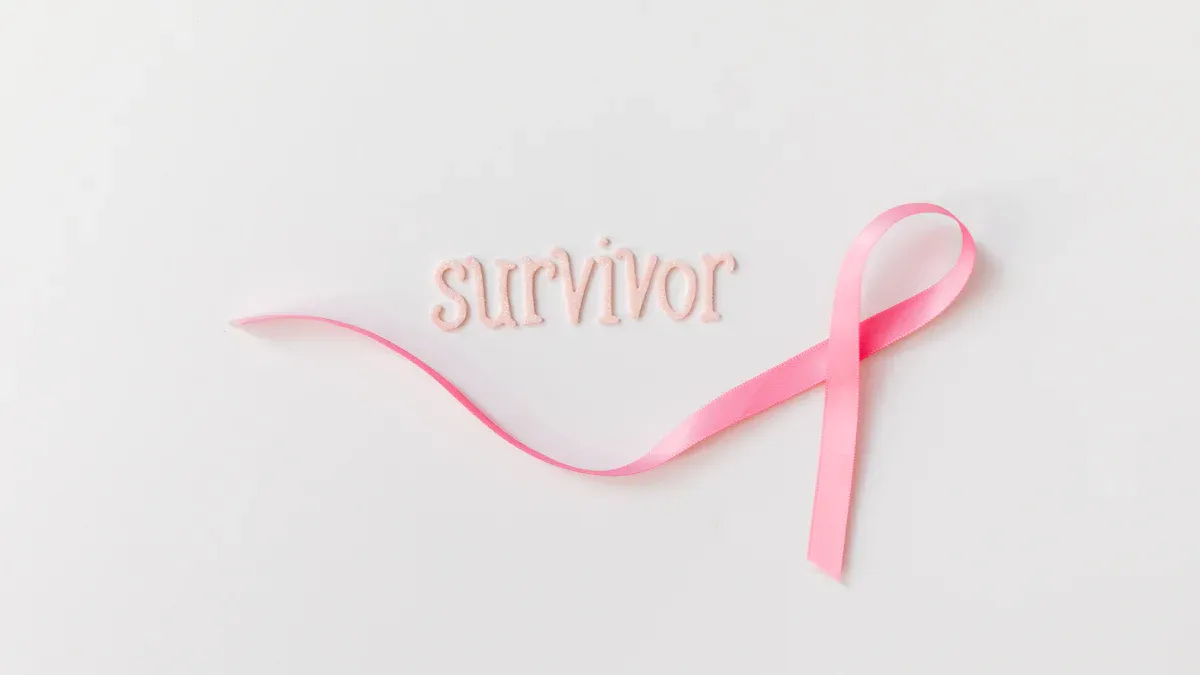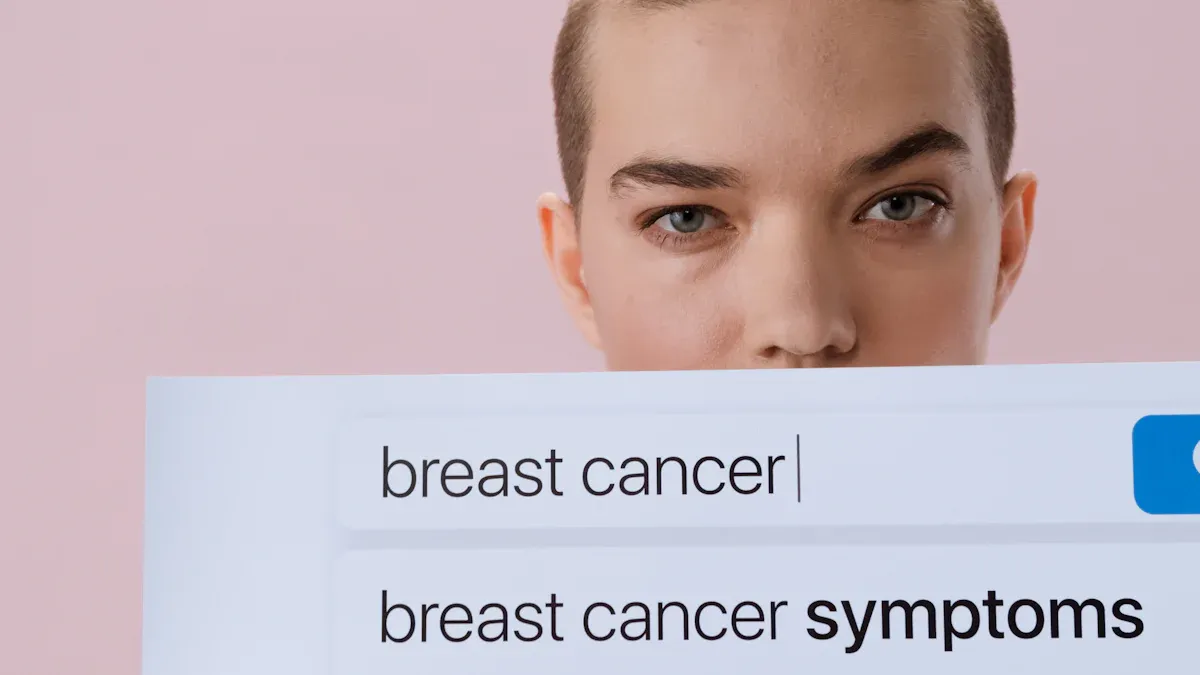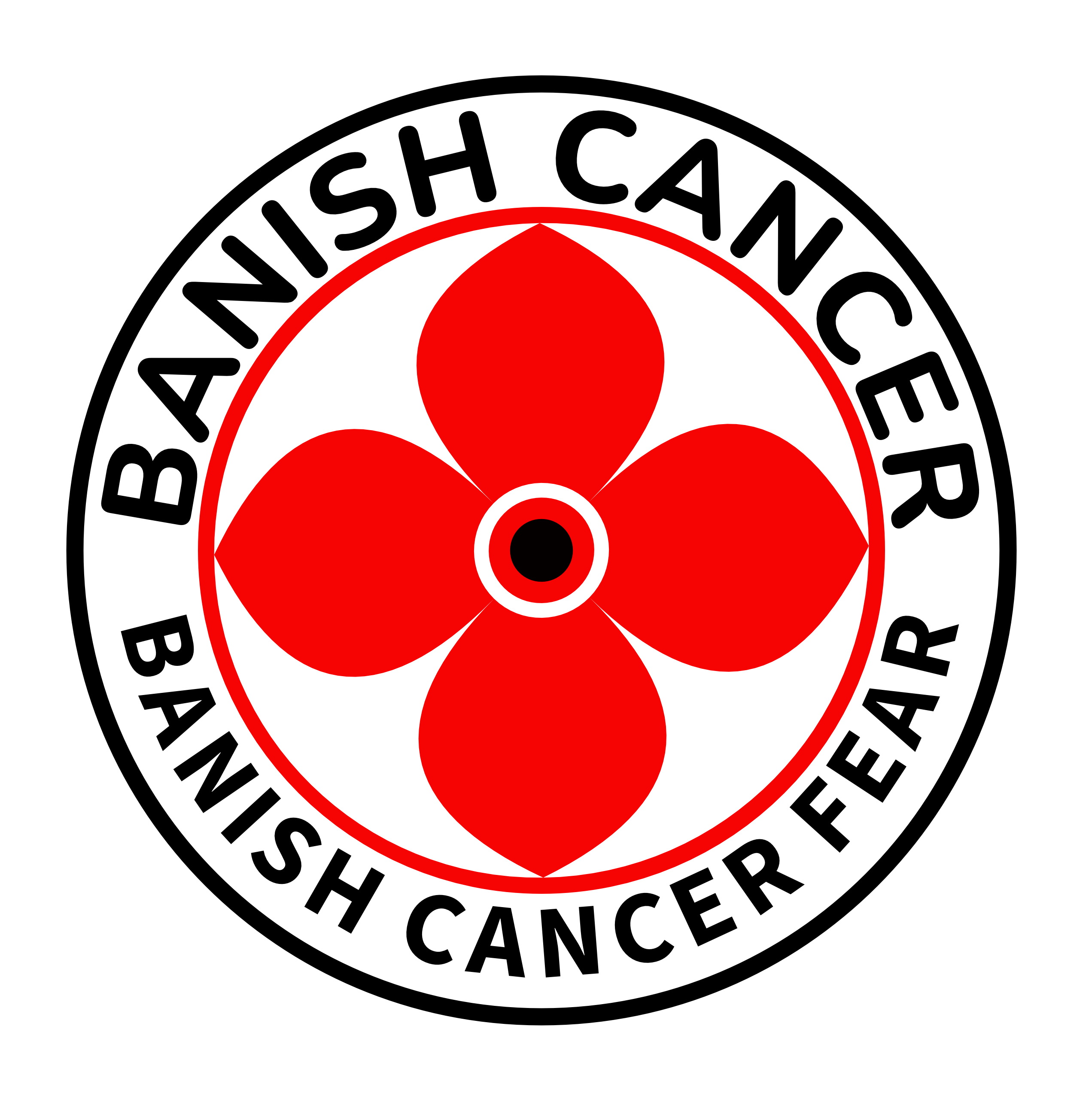What Are the Symptoms and Causes of Breast Cancer

Breast cancer affects millions of women worldwide. In 2022, 2.3 million women received a diagnosis, making it one of the most common cancers globally. Early signs often include a lump in the breast or changes in its size or shape. Advanced cases may cause persistent pain or skin changes. Survival rates vary based on the stage at diagnosis. For localized cases, the five-year survival rate is 99%, but it drops to 30% for distant-stage cancer. Recognizing symptoms early and understanding potential causes can empower you to take proactive steps toward prevention and early detection.
Key Takeaways
Finding breast cancer early is very important. Check for lumps, size or shape changes, and strange nipple discharge.
Family genes, like BRCA1 and BRCA2, can raise breast cancer risk. Get genetic tests if your family has a history of it.
How you live matters. Exercise often, eat healthy, and drink less alcohol to lower your chances of breast cancer.
Regular checks, like mammograms and self-checks, can find breast cancer early. Take care of your health.
Talk to a doctor if you see anything unusual with your breasts. Acting early can help you get better results.
Symptoms of Breast Cancer

Early Symptoms
Lump or thickening in the breast or underarm
One of the earliest signs of breast cancer is a lump or thickened area in the breast or underarm. You may notice this during a self-exam or while getting dressed. These lumps often feel firm and may not cause pain. However, any unusual mass should prompt you to consult a healthcare provider.
Changes in breast size, shape, or contour
Changes in the size or shape of your breast can also signal breast cancer. You might observe one breast appearing larger or differently shaped than the other. Swelling or visible differences in contour are common early symptoms. Paying attention to these changes can help you detect issues early.
Nipple discharge or changes in nipple appearance
Unusual nipple discharge, especially if it is not breast milk, can be an early warning sign. This discharge may appear clear, yellow, or even bloody. Additionally, changes in the nipple, such as inversion or flattening, should not be ignored.
Advanced Symptoms
Persistent breast or nipple pain
As breast cancer progresses, you may experience ongoing pain in the breast or nipple. This pain can feel sharp, dull, or throbbing. Persistent discomfort warrants immediate medical attention.
Swelling, redness, or warmth in the breast
Advanced stages often cause visible swelling or redness in the breast. The affected area may feel warm to the touch. These symptoms can indicate inflammation or more severe underlying issues.
Skin changes, such as dimpling or puckering
Skin changes, including dimpling or puckering, are common in advanced breast cancer. The skin may resemble an orange peel due to thickening or pitting. These changes often suggest that the disease has spread to nearby tissues.
Symptoms of Specific Types
Inflammatory breast cancer (red, swollen, and warm breast)
Inflammatory breast cancer presents unique symptoms. Your breast may appear red, swollen, and warm. The skin might feel thickened or dimpled, resembling an orange peel. You could also notice one breast feeling heavier or more tender than the other. Swelling of lymph nodes near the collarbone or underarm is another critical sign.
Paget’s disease of the nipple (scaly or crusty skin around the nipple)
Paget’s disease of the nipple often causes scaly, crusty, or red skin on the nipple and areola. You might experience burning or itching sensations. The nipple may appear flat or inverted, and there could be discharge that is yellow or bloody.
Triple-negative breast cancer (aggressive symptoms, often in younger women)
Triple-negative breast cancer tends to show aggressive symptoms. Younger women are more likely to develop this type. Symptoms may include rapid changes in breast size, noticeable lumps, and skin abnormalities. Early detection is crucial due to its aggressive nature.
Causes of Breast Cancer
Genetic Causes
BRCA1 and BRCA2 gene mutations
Mutations in the BRCA1 and BRCA2 genes play a significant role in breast cancer development. These genes produce proteins that repair damaged DNA. When harmful mutations occur, the risk of breast and ovarian cancer increases.
Individuals with these mutations often develop cancer at younger ages.
A normal copy of either gene can protect against cancer, but additional changes in the DNA may lead to its onset.
Family history of breast cancer
Your family history can influence your risk of developing breast cancer.
Women with a first-degree relative (mother, sister, or daughter) who had breast cancer face about twice the risk compared to those without such a history.
If more than one first-degree relative has had breast cancer, the risk increases to 2-4 times higher.
The younger the age of diagnosis in your relatives, the greater your risk.
Note: A strong family history of breast cancer may indicate inherited genetic risks, especially if other cancers like ovarian or pancreatic are also present.
Hormonal and Reproductive Causes
Prolonged estrogen exposure (e.g., early menstruation, late menopause)
Your exposure to estrogen and progesterone hormones affects your breast cancer risk. Early menstruation and late menopause increase this exposure, raising the likelihood of developing the disease. Hormone replacement therapy and oral contraceptives also contribute to higher risk levels.
Reproductive history (e.g., having children later or not at all)
The timing of childbirth impacts your risk.
Breast Cancer Risk | |
|---|---|
Before age 20 | Decreased risk |
After age 30 | Increased risk |
35 or younger | Decreased risk |
10 years post-birth | Lower risk than non-mothers |
Lifestyle and Environmental Causes
Smoking and alcohol consumption
Lifestyle choices like smoking and drinking alcohol can increase your risk of breast cancer. Alcohol raises estrogen levels, which are linked to estrogen receptor-positive breast cancer. Women who consume 2-3 drinks daily face a 20% higher risk compared to non-drinkers.
Obesity and lack of physical activity
Excess weight, especially after menopause, raises your risk. Fat tissue produces estrogen, which can fuel breast cancer growth. Staying active helps regulate hormones and maintain a healthy weight.
Exposure to radiation or harmful chemicals
Radiation exposure, especially during medical procedures like x-rays or CT scans, increases your risk. This risk becomes higher when combined with smoking or exposure to harmful chemicals.
Risk Factors for Breast Cancer
Non-Modifiable Risk Factors
Age and gender
Your age and gender significantly influence your risk of developing breast cancer. Women are far more likely to develop this disease than men. Additionally, as you grow older, your risk increases. Most cases occur in women aged 55 and older. The table below highlights these factors:
Risk Factor | Description |
|---|---|
Age | As you get older, your risk of breast cancer goes up. Most breast cancers are found in women age 55 and older. |
Gender | This disease is much more common in women than in men. |
Genetic Factors | About 5% to 10% of breast cancer cases are hereditary due to gene changes passed from a parent. |
BRCA1 and BRCA2 Mutations | Inherited mutations in these genes can lead to abnormal cell growth, increasing cancer risk. |
Personal or family history of breast cancer
A personal or family history of breast cancer raises your risk. If a first-degree relative, such as your mother or sister, has had breast cancer, your risk doubles. If more than one first-degree relative has been diagnosed, your risk increases by 2-4 times. A family history of breast cancer diagnosed before age 40 or in male relatives also heightens your risk. However, most women diagnosed with breast cancer do not have a family history.
Evidence Description | Risk Increase |
|---|---|
First-degree female relative with breast cancer | About twice the risk |
More than one first-degree female relative with breast cancer | About 2-4 times higher risk |
Relative diagnosed before age 40 | About twice the risk |
Close male relative with breast cancer | Increased risk |
Families with strong history of breast cancer | 5%-10% related to inherited gene mutation |
Modifiable Risk Factors
Diet and exercise habits
Your lifestyle choices play a crucial role in reducing breast cancer risk. Following these habits can help:
Stay physically active by exercising regularly.
Maintain a healthy weight.
Eat a balanced diet rich in vegetables, fruits, and whole grains.
Limit red and processed meats, sugar-sweetened beverages, and highly processed foods.
Avoid alcohol or limit it to less than one drink per day.
Alcohol and tobacco use
Alcohol and tobacco use increase your risk of breast cancer. Even one drink per day raises your risk by 5%. Alcohol can also lead to obesity, which further increases estrogen levels and promotes cancer growth. Smoking damages DNA, which may result in tumor development.
Hormone replacement therapy or birth control pills
Hormone replacement therapy (HRT) and birth control pills slightly increase breast cancer risk. Synthetic hormones in these medications can promote abnormal cell growth. Studies show that women using oral contraceptives, especially certain formulations, face a modest increase in risk. If you are considering these options, discuss the risks with your doctor.
Early Detection and Prevention

Screening Methods
Mammograms
Mammograms are one of the most effective tools for detecting breast cancer early. They can identify changes in breast tissue years before physical symptoms appear. Women aged 40-44 may choose to start annual mammograms, while those aged 45-54 should have them yearly. After age 55, you can opt for screenings every other year or continue annually. Regular mammograms increase the chances of finding smaller tumors that have not spread, improving treatment outcomes. Recent advancements, such as 3D mammography, enhance accuracy and reduce the need for additional testing, especially for women with dense breast tissue.
Breast self-exams
Performing regular breast self-exams helps you become familiar with how your breasts normally look and feel. This awareness makes it easier to notice unusual changes, such as lumps or skin abnormalities. While self-exams do not replace professional screenings, they serve as a valuable tool for early detection.
Clinical breast exams
A clinical breast exam involves a healthcare provider checking your breasts for abnormalities. These exams are often part of routine check-ups and can complement mammograms. They provide an additional layer of screening, especially for younger women or those at higher risk.
Preventive Strategies
Maintaining a healthy lifestyle
Adopting a healthy lifestyle significantly lowers your risk of breast cancer. Regular physical activity, such as 150 minutes of moderate exercise weekly, helps maintain a healthy weight. A balanced diet rich in fruits and vegetables supports overall health. Limiting alcohol intake and avoiding tobacco use further reduce your risk.
Genetic testing and counseling
Genetic testing identifies inherited mutations, such as BRCA1 and BRCA2, that increase breast cancer risk. Genetic counseling helps you understand your family history and the implications of test results. If you carry these mutations, you can explore preventive measures, including enhanced screening or risk-reducing surgeries.
Regular medical check-ups
Routine medical check-ups ensure that any changes in your breast health are detected early. Discuss your risk factors with your doctor and follow their recommendations for screenings. Staying proactive with regular check-ups can make a significant difference in early detection and prevention.
Recognizing the symptoms of breast cancer early can save lives. This disease develops in the milk-producing glands and ducts of the breast tissue. While its exact cause remains unknown, genetic mutations like BRCA1 and BRCA2 significantly increase the risk. You should stay alert for warning signs such as lumps, pain, or changes in the skin.
Adopting healthy habits can reduce your risk. Regular exercise, a balanced diet, and routine screenings play a vital role in prevention. Staying vigilant about changes in your body and consulting a doctor promptly can improve outcomes. Early detection increases survival chances and empowers you to take control of your health.
FAQ
What are the early warning signs of breast cancer?
Early signs include a lump in the breast or underarm, changes in breast size or shape, and unusual nipple discharge. You might also notice skin dimpling or redness. Pay attention to these changes and consult a doctor if they occur.
Can men develop breast cancer?
Yes, men can develop breast cancer, though it is rare. Symptoms include a lump in the chest area, nipple discharge, or changes in the skin around the nipple. If you notice these signs, seek medical advice immediately.
Does wearing a bra increase breast cancer risk?
No, wearing a bra does not increase your risk of breast cancer. Scientific studies have found no link between bras, including underwire styles, and breast cancer. Focus on proven risk factors like lifestyle choices and family history.
How often should you perform a breast self-exam?
Perform a breast self-exam once a month. Choose the same time each month, such as a few days after your menstrual cycle ends. Regular self-exams help you notice unusual changes early.
Is breast cancer preventable?
While you cannot eliminate all risks, you can reduce them. Maintain a healthy weight, exercise regularly, and limit alcohol consumption. Genetic testing and regular screenings also help with early detection and prevention.
Tip: Stay proactive about your health. Early detection saves lives!
---
ℹ️ Explore more: Read our Comprehensive Guide to All Known Cancer Types for symptoms, causes, and treatments.
See Also
Exploring Anal Cancer: Symptoms And Underlying Causes
Acute Eosinophilic Leukemia: Symptoms And Causes Explained
Adenocarcinoma Of The Lung: Causes And Risk Factors
